How to increase property value in Cape Town northern suburbs
The Northern Suburbs Homeowner's Guide to Maximising Property Value
A Data-Driven Blueprint to Avoid Costly Mistakes and Secure Your Investment’s Future.

For many homeowners over sixty, your property is not just a home; it is the result of a lifetime of work and the most significant financial asset you hold.
As you consider the next chapter, understanding how to protect and grow this investment is of the utmost importance.
The property market in our Northern Suburbs is in a state of dynamic change, and knowing the specific forces at play is the first step in learning how to increase property value in Cape Town Northern Suburbs.
This guide is designed to give you that clarity, moving from the broad, external factors that set your home’s baseline worth to the specific, manageable actions you can take to secure its maximum value.
The Unshakeable Foundation: Why Location Still Governs Your Home's Value
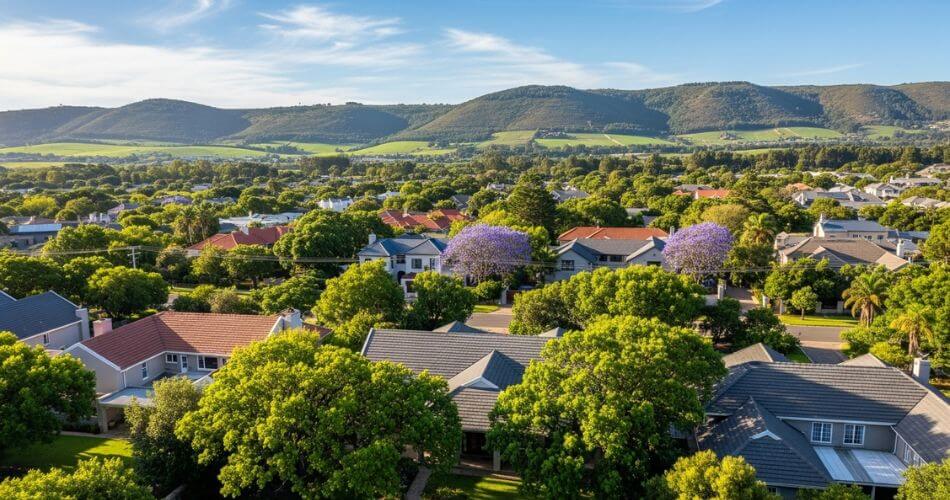
Before we discuss paint colours or kitchen countertops, we must start with the single most powerful factor in real estate: location. Your property’s value is fundamentally anchored to its surroundings.
The quality of local schools, the convenience of nearby shops, the condition of your neighbour’s garden, and the city’s plans for your area all create a framework of value that exists outside your front door. Understanding these forces is the first step to positioning your property correctly in the market.
The Power of Proximity: Quantifying the Value of Amenities
The old saying holds true: a home’s worth is defined by its position. This is powerfully evident right here in the Northern Suburbs, where a direct line can be drawn between access to quality amenities and the remarkable growth in property prices.
Look at Durbanville, which has become one of Cape Town’s most desirable areas. Its appeal is built on a foundation of excellent schools, with over fifteen multilingual options drawing in families who now make up the majority of buyers.
This demand is not just theoretical; it is written in the numbers. The median house price in Durbanville has more than doubled in the last decade, reaching R3.1 million.
This growth story is repeated in Bellville and Parow. These established suburbs are seeing price growth of around 80% over the last ten years, driven by their solid infrastructure, corporate headquarters, and closeness to world-class medical facilities like Tygerberg Hospital.
This creates a constant pool of buyers, from professionals to medical staff, all seeking the convenience your area offers.
What this data reveals is a deep economic shift. The Northern Suburbs are no longer just quiet communities for people commuting to the city.
With major companies like The Foschini Group, Pepkor, and Shoprite establishing their headquarters here, the area is transforming into a self-sufficient secondary business district. For you as a homeowner, this economic change provides a powerful layer of security for your investment.
Your property is situated within a growing economic centre with a sustained and deep pool of potential buyers, which helps protect its value against wider market dips.
The Neighbourhood Effect: Curb Appeal by Proxy and the Impact of Your Neighbours
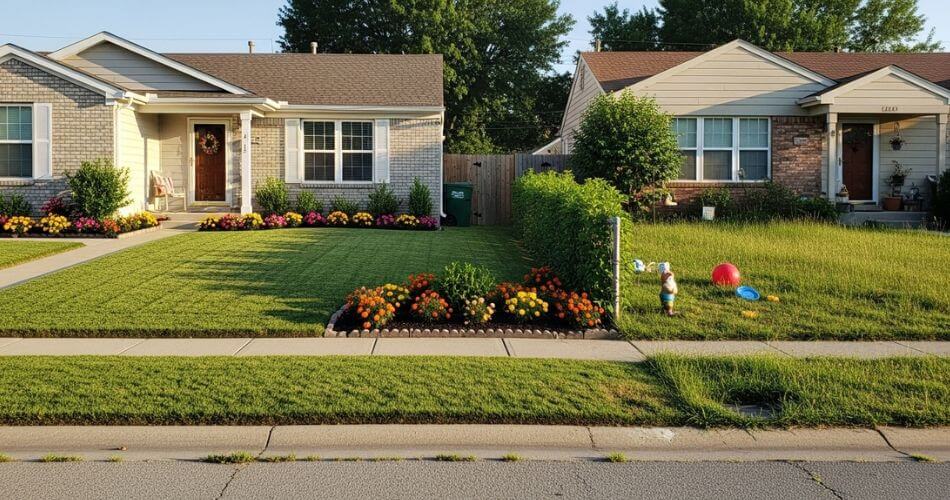
Your home’s value is not judged in isolation; it is judged as part of the street and the wider community. The overall condition of your neighbourhood has a direct financial effect on your property.
This is the core of the impact of the neighborhood on property value. A tidy, well-maintained street with neat gardens sends a powerful signal to buyers that this is a safe, stable, and desirable place to live.
This “curb appeal by proxy” means that a diligent neighbour who mows their lawn and keeps their property in good order is actively contributing to your home’s value.
Conversely, a neighbour’s overgrown garden or dilapidated building can directly reduce what a buyer is willing to pay for your home. Buyers form their first impression from the street, and a messy neighbouring property can create a negative perception before they even step through your door.
The risks can also be physical. A poorly constructed lapa built too close to your boundary line can increase fire risk, while an overloaded boundary wall can collapse and cause damage that your insurance may not cover.
Even a neighbour’s perfectly legal and city-approved construction can diminish your property’s value by blocking sunlight or a pleasant view, and in these cases, you often have little legal recourse.
This is why understanding the character of your immediate surroundings is so important. It is a silent but powerful force that is constantly shaping the market’s perception of your home.
The Double-Edged Sword of Development: Tracking Future Plans
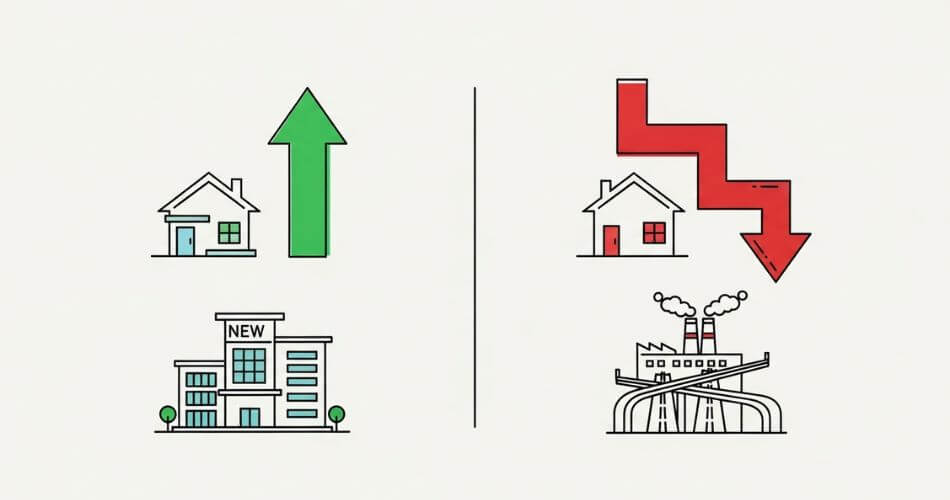
Future developments can be one of the most dramatic influences on your property’s value, capable of either adding significant worth or causing a substantial loss.
For this reason, staying informed about municipal and private plans for your area is not just a good idea; it is a vital part of managing your asset.
Positive developments, like the R77-million upgrade to Jip de Jager Drive, are set to improve access and make surrounding suburbs more attractive, lifting property values. Similarly, homes near new MyCiTi bus routes have been shown to command price premiums of 10% to 20%.
However, development can also present a threat. The construction phase of any large project, be it a new road or a housing development, is almost always a deterrent to buyers.
The noise, dust, and disruption can make a property difficult to sell, even if the finished project will be a benefit. This is where proactive knowledge becomes a powerful tool. The City of Cape Town offers public online resources, like zoning maps and development application portals, that allow you to monitor planned changes.
By using these tools, you can move from being a passive observer to an active manager of your property’s future, giving you the chance to object, sell, or hold based on solid information.
While these powerful external forces set the baseline for your home’s worth, the ability to truly maximize its value lies within your own control.
The Controllables: Maximising Value Within Your Four Walls
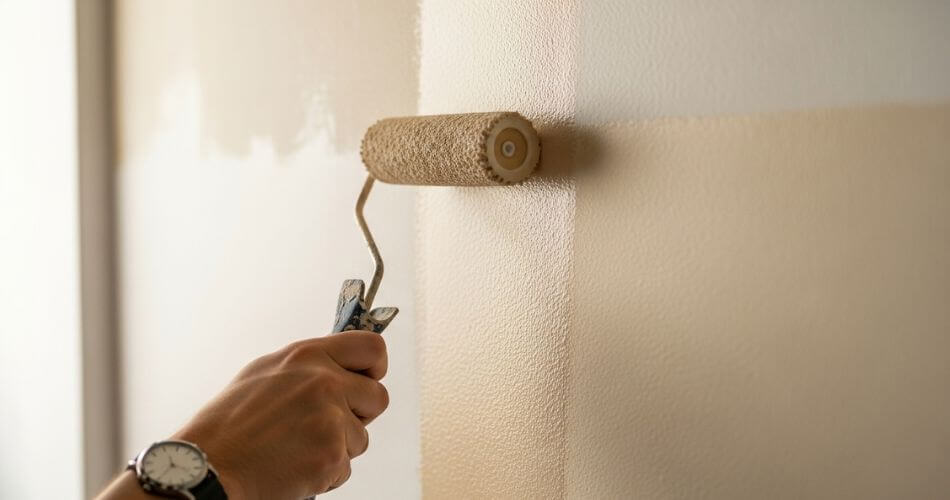
While you cannot change your home’s location, you have complete authority over its condition. The decisions you make regarding maintenance, renovations, and presentation will determine whether your property sells at the top of its potential price range or languishes on the market. This is where your power as a homeowner truly lies.
Maintenance as an Investment, Not an Expense.
Viewing home maintenance as an expense is a costly error. It is, in fact, one of the most important investments you can make in your property. A home showing signs of neglect can lose 10% or more of its value, and in a competitive market, well-maintained properties sell up to 20% faster.
The failure to perform routine upkeep creates a financial chain reaction. A small, inexpensive problem like a minor roof leak, when ignored, can become a major disaster involving water damage, rot, and mould.
These visible signs of deferred maintenance are immediate red flags for buyers and valuers, leading directly to lower offers. Beyond the sale price, poor maintenance creates a serious insurance risk.
Insurers are not in the business of paying for damage caused by neglect. The leading reason for rejected homeowner claims in South Africa is “gradual deterioration, lack of maintenance, or wear and tear.”
In the event of a claim, especially after a storm, you may be asked for proof of regular upkeep. Without it, you could be left to cover thousands of rands in repairs yourself. To protect your asset, focus your maintenance efforts on high-risk areas: the roof, gutters, foundations, and boundary walls.
Strategic Renovations with Proven Returns (ROI)
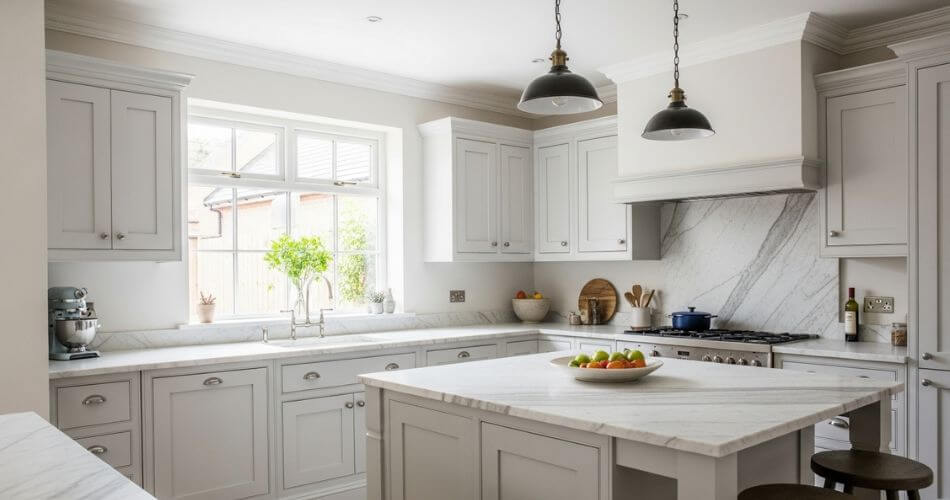
Not all improvements are created equal. Spending money on your home does not automatically increase its value. The key is to focus on strategic upgrades with a proven financial return, avoiding the trap of “overcapitalisation,” where the cost of the renovation is more than the value it adds.
When considering the return on investment for home renovation in South Africa, the data is clear: kitchens and bathrooms are the undisputed winners. These are the functional and emotional heart of a home, and they are often the spaces that make or break a sale.
A modern, well-designed kitchen offers the highest return, with homeowners typically recouping 70% to 80% of the cost upon resale. A bathroom upgrade is not far behind, offering a return of 60% to 75%. Adding an en-suite bathroom to the main bedroom is a particularly high-value improvement.
However, it is important to be consistent. A state-of-the-art kitchen paired with dated, worn-out flooring creates a jarring impression that diminishes the value of the upgrade.
Likewise, poor-quality DIY work signals to a buyer that other, more important tasks may have been done to a low standard. Unless you are highly skilled, investing in professionals is the smarter choice.
The Perils of Personalisation: Making Your Home Market-Ready
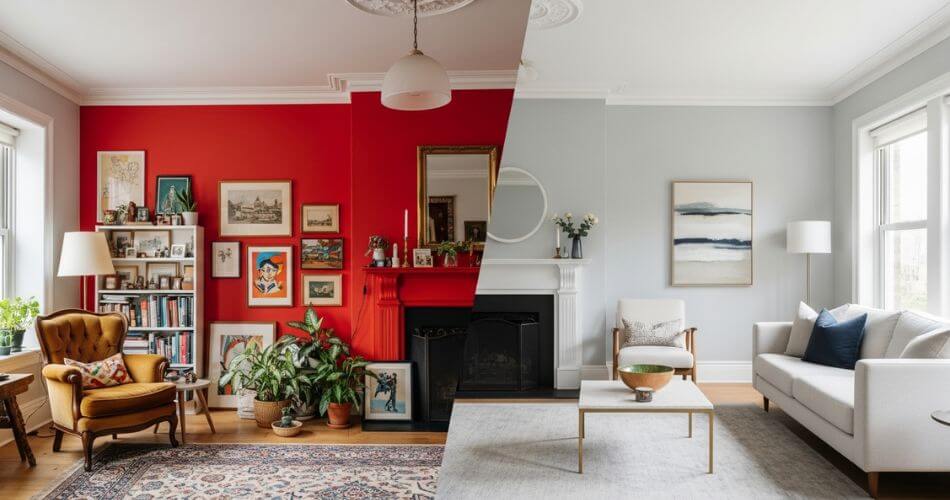
Your home is a reflection of your life and tastes, but when preparing to sell, the goal shifts. It becomes about creating a welcoming environment where the widest possible range of buyers can picture their own lives unfolding. Highly personal or bold design choices, while meaningful to you, can become a financial liability on the market.
The Psychology of Colour and Buyer Perception.
Colour has a powerful psychological effect on buyers. Overwhelmingly, buyers prefer neutral and earthy palettes—whites, beiges, and soft greys. These colours act as a blank canvas, allowing them to imagine their own furniture and style in the space without being distracted.
A bold feature wall or a brightly coloured room does the opposite. It forces a buyer to start calculating the time, effort, and money required to repaint.
This mental calculation is what home stagers call “price eroding.” A buyer will almost always overestimate the cost and inconvenience of making a change. A R5,000 paint job can easily become a R15,000 deduction in their mind, because they are factoring in the “hassle cost.”
This is why one of the simplest and most effective actions you can take before selling is to repaint your home in neutral colours. It removes the opportunity for a buyer to perform this negative and costly mental math, delivering a disproportionately high return for a relatively small investment.
Lifestyle-Specific Customisations That Can Deter Buyers
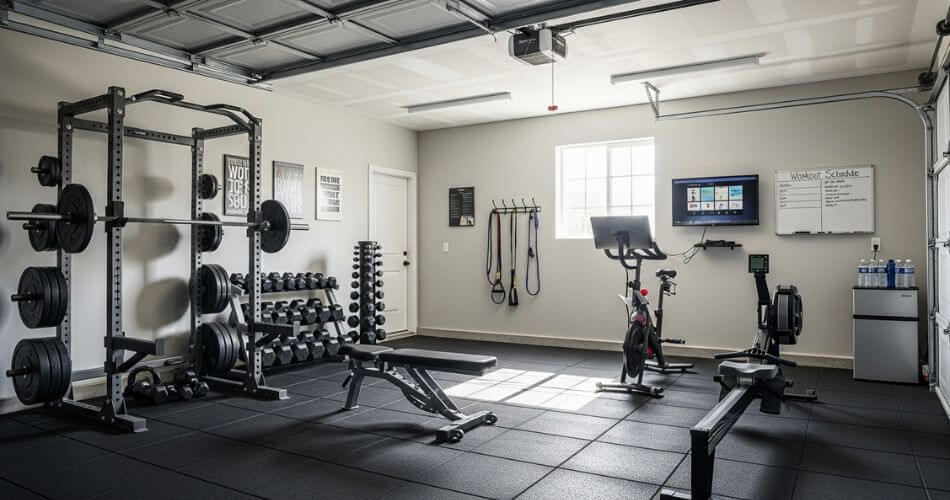
Beyond colour, customisations made to suit a specific lifestyle can also negatively affect your home’s value.
Converting a garage into a home gym or sacrificing a bedroom for a large walk-in closet might be perfect for you, but it removes features that most buyers consider essential: secure parking and a sufficient number of bedrooms. If you have made such changes, it is wise to ensure they can be easily reversed before you put your home on the market.
Similarly, installing niche luxury features that are out of character for the neighbourhood, like a wine cellar in a modest family suburb, can make it very difficult to recoup your investment.
The key is to present a home that is clean, well-maintained, and broadly appealing, allowing its fundamental strengths to shine through without the distraction of highly personal touches.
With the home itself prepared, we now turn our attention to the modern features that are no longer optional extras but essential components of a high-value property in today’s market.
Future-Proofing Your Asset: The New Imperatives of Sustainability
The South African property market is changing. Today’s buyers are looking for more than just a beautiful home; they are looking for a resilient and self-sufficient one.
Features that offer security from our country’s unique utility challenges are no longer luxuries. They are essential assets that add real, quantifiable value to your property.
The Solar Revolution: From Luxury to Necessity
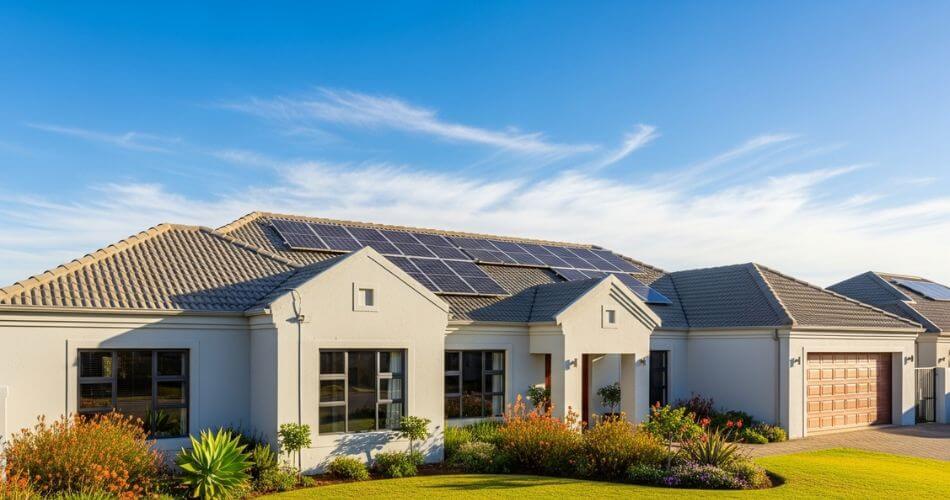
With load shedding and rising electricity tariffs, solar power has become a significant driver of property value. The data on solar power property value in South Africa shows that a home with a solar installation can command a price premium of between 3% and 8%.
On a R2 million home, that is an additional R100,000 in value, an amount that often covers a large part of the system’s installation cost.
The financial case is compelling. The payback period for a typical system, where your savings on electricity bills equal your initial investment, can be as short as four to seven years.
After that, the electricity you generate is effectively free. More importantly, the buyer’s perception has changed. Solar power is now seen as a practical necessity, a form of insurance against power cuts. A home with solar signals to the market that it is modern, well-maintained, and ready for the future.
Water Security as a Marketable Asset
After the Western Cape’s “Day Zero” drought, water security became a top concern for buyers in our region. Features like rainwater harvesting tanks and greywater recycling systems have been transformed from eco-friendly novelties into high-value assets.
During the drought, installation companies saw a 100-fold increase in interest, and today, most municipalities require new developments to include rainwater harvesting as standard.
This demand is reflected in property prices. Studies have shown a measurable price premium for homes with rainwater tanks, with the added value often being greater than the cost of installation.
Like solar power, these systems offer buyers peace of mind and security. Alongside energy and water, a third utility has become non-negotiable: high-speed internet.
The rollout of fibre has made fast, reliable connectivity a baseline expectation for modern living, and advertising a home as “fibre-ready” is now a key selling point.
The Appeal of Green Living and Self-Sufficiency

The move towards sustainability extends into the garden. Buyers are increasingly attracted to low-maintenance, water-wise gardens that use indigenous plants adapted to our local climate.
These gardens are not only better for the environment, but they also reduce water bills and require less work. The “grow your own” movement has also become a mainstream lifestyle trend, with a well-maintained vegetable patch or herb garden now seen as a unique and attractive feature that appeals to a modern interest in healthy, organic living.
The appeal of these green features is rooted in pragmatism. Solar panels, water tanks, and gas stoves are not just about environmental ideals; they are practical solutions to the real-world challenges of load-shedding, water restrictions, and rising utility costs.
When you sell your home, it is more effective to frame these features in terms of their practical benefits: “This home offers you uninterrupted power,” or “This home provides water security.” This speaks directly to a buyer’s needs and justifies a premium price.
The Senior Homeowner's Strategic Toolkit: Actionable Steps to a Premier Sale
Understanding the market is the first step. Taking decisive, informed action is the next step. This final section provides practical checklists and guides to help you navigate the selling process, avoid common pitfalls, and confidently secure the best possible outcome for your property.
High-Impact, Low-Cost Improvements.
You do not need a full-scale renovation to make a significant impact. Several highly effective, low-cost projects can dramatically improve your home’s appeal.
A fresh coat of neutral paint is the single most cost-effective improvement you can make, with a professional exterior paint job capable of increasing market value by up to 15%.
Updating old hardware, like cabinet handles and doorknobs, has an immediate modernizing effect. Swapping out dated light fixtures for bright, energy-efficient LEDs can make your home feel lighter and more spacious.
For bathrooms, a cosmetic lift, a new toilet seat, a modern mirror, and updated taps can achieve much of the impact of a full renovation for a fraction of the cost. Finally, never underestimate the power of cost-effective curb appeal ideas.
A thorough garden tidy-up, weed-free paving, and a few pots of colourful flowers near the entrance create a welcoming first impression that sets a positive tone for the entire viewing.
Due Diligence Made Simple: How to Research Developments in Your Area
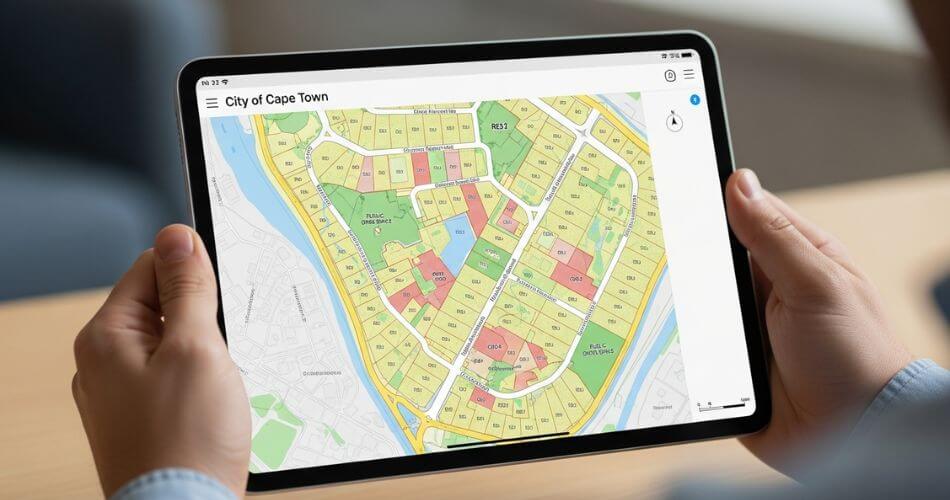
To protect your property from unforeseen changes in your neighbourhood, you can use the City of Cape Town’s online tools to stay informed. Start with the “City Map and Zoning Viewer” on the City’s website to check the zoning of your property and those around you.
This will tell you what is legally permitted to be built. Next, you can use the “Development Application Management System” (DAMS) portal to track any building or land use applications submitted in your area.
Finally, when a significant development is proposed, the City is required to conduct a public participation process. This is your formal opportunity to voice your opinion and potentially influence the outcome.
Being proactive with this research can provide a great strategic advantage.
Avoiding the Pitfalls: Common Selling Mistakes for Long-Term Homeowners
Selling a home after many years brings unique challenges. The most damaging of all common home-selling mistakes in South Africa is emotional overpricing.
Studies show that long-term owners consistently attempt to price their homes 25% to 35% above fair market value, driven by deep personal attachment. An overpriced property will stagnate on the market, ultimately selling for less than if it had been priced correctly from the start.
Another pitfall is choosing the wrong agent, particularly one who provides an inflated valuation just to win your business. The right agent will justify their recommended price with a comprehensive, data-backed market analysis.
Finally, ignoring legal and building compliance can derail a sale at the last minute. If you have made alterations over the years without approved municipal plans, a bank may refuse to finance the property for a buyer. It is essential to ensure all your paperwork is in order before you list your home.
Your home is a significant asset, and with the right strategy, you can be an active steward of its value. By understanding the market, making smart, data-driven improvements, and approaching the sale with objective pragmatism, you can confidently manage the process.
The goal is to transform any anxiety into quiet confidence, knowing you have taken the right steps to secure your investment’s future and understand how to increase property value in Cape Town Northern Suburbs.
If you are ready to take the next step, a personalized consultation can provide you with a clear and tailored strategy for your unique property.
About the Author
Andre Swart is a respected leader in Brackenfell real estate with over 20 years of results-driven experience. Through his platform, “Andre Swart Inspires,” he moves beyond simple property sales to share the proven mindset, strategies, and habits that build lasting success.
Grounded in integrity, Andre’s mission is to mentor the next generation of top agents and provide homeowners with the trusted guidance they deserve.
